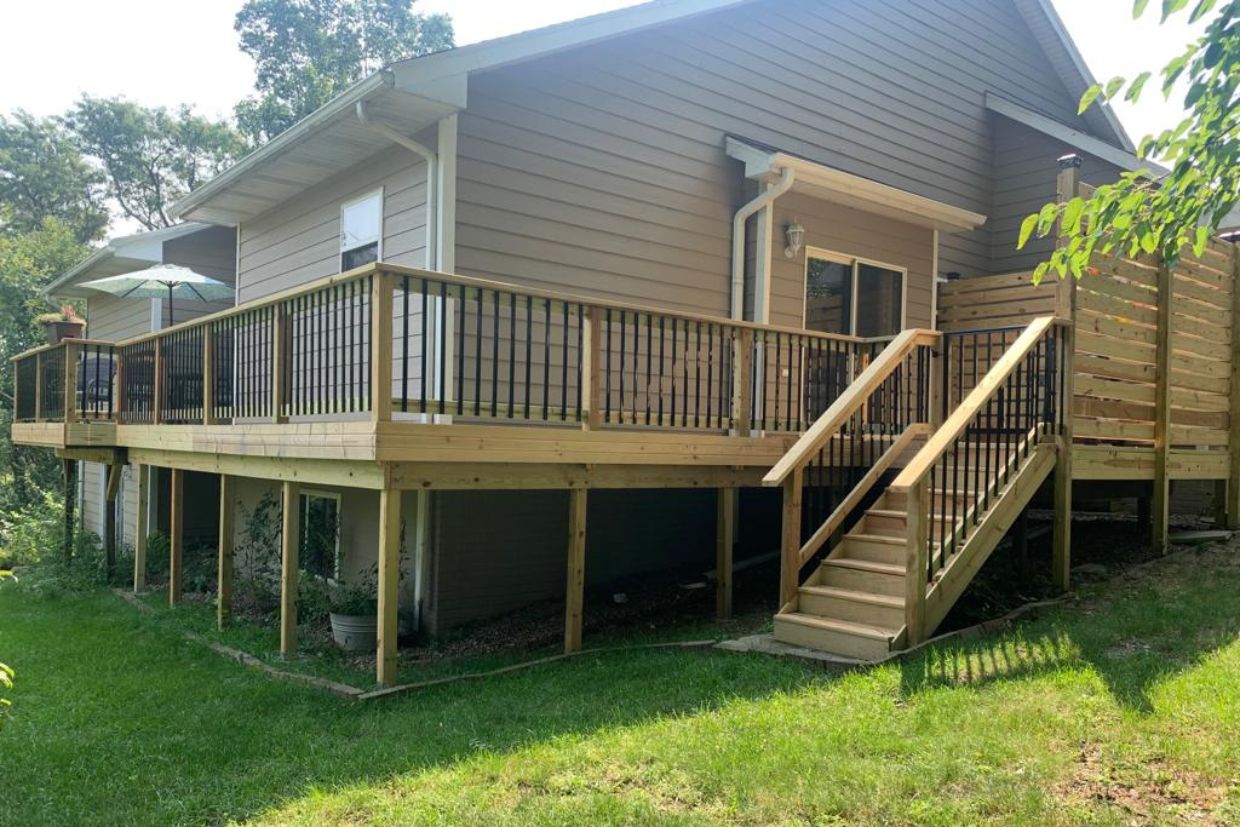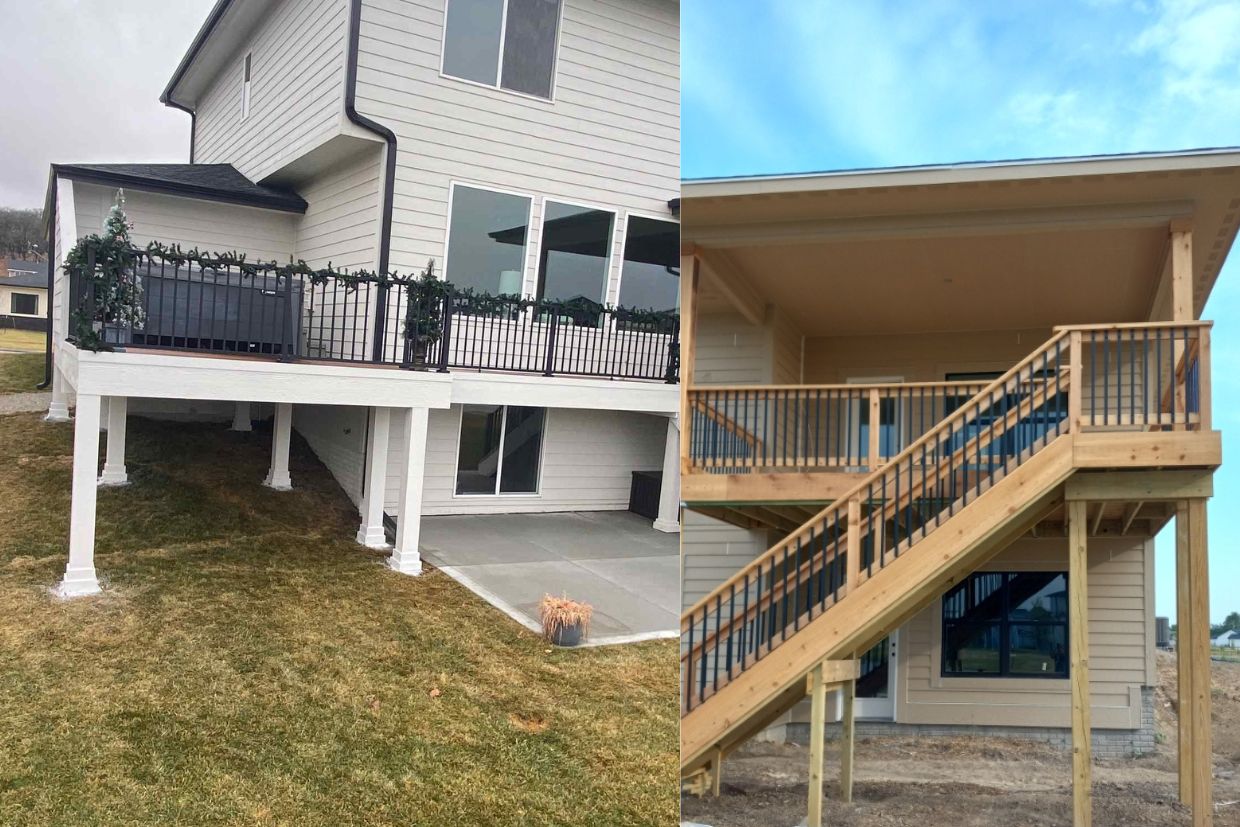When planning a new deck, most homeowners naturally focus on aesthetics—deck boards, colors, railing styles, and lighting features. But before any of those details come into play, it’s crucial to start with what lies beneath: the substructure. This foundational element determines not only the strength and stability of your deck but also its safety, longevity, and ability to withstand the diverse weather conditions found in places like Iowa.
In this comprehensive guide, we’ll explore how deck substructure choices—including framing materials, fasteners, footings, and moisture management strategies—play a vital role in crafting a durable and long-lasting outdoor living space. Whether you’re dreaming of a classic wood deck or a low-maintenance composite system, getting the substructure right is essential.
Why Substructure Matters More Than You Think

The substructure of a deck includes the posts, beams, joists, and ledgers that provide the framework for the entire structure. Think of it as the skeletal system of your deck—it’s responsible for bearing weight, resisting movement, and maintaining shape over time. A strong substructure prevents sagging, warping, and collapse, especially in regions like Iowa where decks endure snow loads, freeze-thaw cycles, and intense heat.
A well-built substructure ensures:
- Safety: Minimizes the risk of structural failure
- Durability: Extends the life of your deck
- Support: Prevents bounce and sway
- Moisture Protection: Reduces rot and mold
- Stability: Handles expansion and contraction due to temperature changes
If corners are cut during this phase, you may face costly repairs or a complete rebuild within just a few years.
Key Components of a Deck Substructure
Let’s break down the components that make up a substructure and how choosing the right materials and methods contributes to long-term deck performance.
1. Footings and Posts
Deck footings transfer the weight of the structure to the ground. They’re typically made of concrete and should be placed below the frost line in cold-weather climates like Iowa’s to prevent heaving during freeze-thaw cycles.
- Concrete Piers: These are poured on-site into cylindrical forms and reinforced with rebar for added strength.
- Helical Piles: For decks built on problematic soil, helical piles can be a more stable option, installed deep into the ground like screws.
Posts, often made from pressure-treated lumber or steel, sit atop the footings and support the weight of the deck. Choose materials rated for ground contact to resist rot and insects.
2. Beams and Joists
Beams span horizontally between posts and provide a platform for joists, which run perpendicular and support the deck boards.
- Joist Spacing: The spacing between joists—typically 12″, 16″, or 24″ on center—affects how solid your deck feels underfoot and depends on your choice of decking material.
- Beam Size and Span: Larger decks require thicker beams or multiple beam lines for proper load distribution.
Pressure-treated Southern Yellow Pine is commonly used for beams and joists. But for greater durability, consider steel framing or double-treated lumber (UC4B-rated) in moisture-prone areas.
Wood vs. Steel: What’s Best for Your Deck Substructure?
The choice of framing material impacts not only cost but also performance over time.

Pressure-Treated Wood
This is the most common and affordable substructure material. It’s chemically treated to resist rot and insect damage.
Pros:
- Readily available
- Easy to cut and fasten
- Affordable
Cons:
- Can warp, twist, or shrink over time
- Requires maintenance and eventual replacement
Steel Framing
Galvanized steel framing is rising in popularity, especially for high-end composite decks.
Pros:
- Impervious to moisture and insects
- Does not warp or shrink
- Longer lifespan
- Fire-resistant
Cons:
- More expensive
- Requires specialized fasteners and knowledge
Steel framing is ideal for decks in humid or rainy climates like Iowa, where moisture exposure is constant.
Fasteners and Connectors: Small Components, Big Impact
The integrity of your deck depends heavily on how it’s fastened together. Galvanized or stainless-steel hardware is essential in preventing corrosion.
- Ledger Board Fasteners: Ledger boards attach the deck to your home and must be secured with lag screws or through-bolts, not just nails.
- Joist Hangers and Brackets: Ensure tight connections between beams and joists.
- Post Anchors: Lift posts off the ground to prevent moisture wicking.
Look for products rated for use with treated lumber or designed to resist rust and deterioration over decades.
Moisture Management: Defending Against Iowa’s Climate
Moisture is one of the biggest enemies of deck substructures. Without protection, water will penetrate wood, leading to rot, mold, and decay.

Flashing
Install flashing tape over the ledger board and joists to prevent water intrusion. Metal flashing around the ledger protects the home’s siding and structure.
Joist Tape
Joist tape seals screw holes and shields the tops of joists from water collection. It’s an inexpensive upgrade that extends the life of your frame.
Drainage Systems
For second-story decks, under-deck drainage systems redirect rainwater away from joists and create dry storage or patio space below.
Design Tips for a Stronger Substructure
Designing for durability starts before construction begins. Here are some key planning considerations:
Load Calculations
Determine the total weight your deck needs to support, including furniture, hot tubs, people, snow loads, and other features.
Multi-Level Structures
For decks with multiple levels, reinforce transitions with additional posts and beams. Proper footings must support each platform individually.
Stairs and Landings
Use extra bracing beneath stairs and landings. These areas endure concentrated foot traffic and can become wobbly if not properly supported.
Blocking
Add blocking between joists to prevent twisting and improve lateral stability. Blocking also supports railing posts and helps distribute loads evenly.
Composite Decking? Pair It with the Right Substructure
Composite decking is often chosen for its beauty and low maintenance. But it’s heavier than wood and has different performance characteristics, meaning your substructure must be designed accordingly.
- Closer Joist Spacing: Many composite manufacturers recommend 12″ spacing to prevent sagging.
- Straight Joists: Composite boards show imperfections more easily than wood, so framing must be square and level.
- Hidden Fasteners: These require precise joist alignment to ensure secure attachment.
Investing in a solid substructure makes your composite deck perform better and last longer.
Maintenance and Inspections
Even the best-built substructure needs care. Conduct annual inspections to check for signs of damage:
- Loose fasteners
- Soft or discolored wood
- Rusted connectors
- Cracks or splitting
Apply fresh sealant to exposed wood every few years. For steel framing, touch up any scratches with rust-inhibiting paint.
Work with Professionals for Peace of Mind
Building a deck is a major investment, and a weak foundation can lead to big problems. Partnering with experienced professionals ensures your substructure is up to code, weather-resistant, and tailored to your landscape.
A professional deck builder in Iowa understands local soil types, frost depths, and permitting regulations. They’ll help you select the right materials and ensure everything from footings to flashing is installed properly.
“Transform your backyard into a four-season sanctuary with a custom-designed deck that blends durability, style, and year-round comfort—built to thrive in every Iowa season.”
Build Smarter with Ankeny Deck Specialist
At Ankeny Deck Specialist, we go beyond surface beauty. Our team builds decks from the ground up—literally—using top-tier materials and precision engineering to create structures that endure Iowa’s toughest seasons.
Whether you’re starting from scratch or upgrading an existing space, we offer:
- Expert substructure design
- Wood and steel framing options
- Moisture defense systems
- Permit assistance
- Custom solutions tailored to your home and lifestyle
Don’t settle for a deck that only looks good today. Choose one that will stand strong for decades to come.
Contact Ankeny Deck Specialist today for a free estimate and see how quality starts from the ground up.

